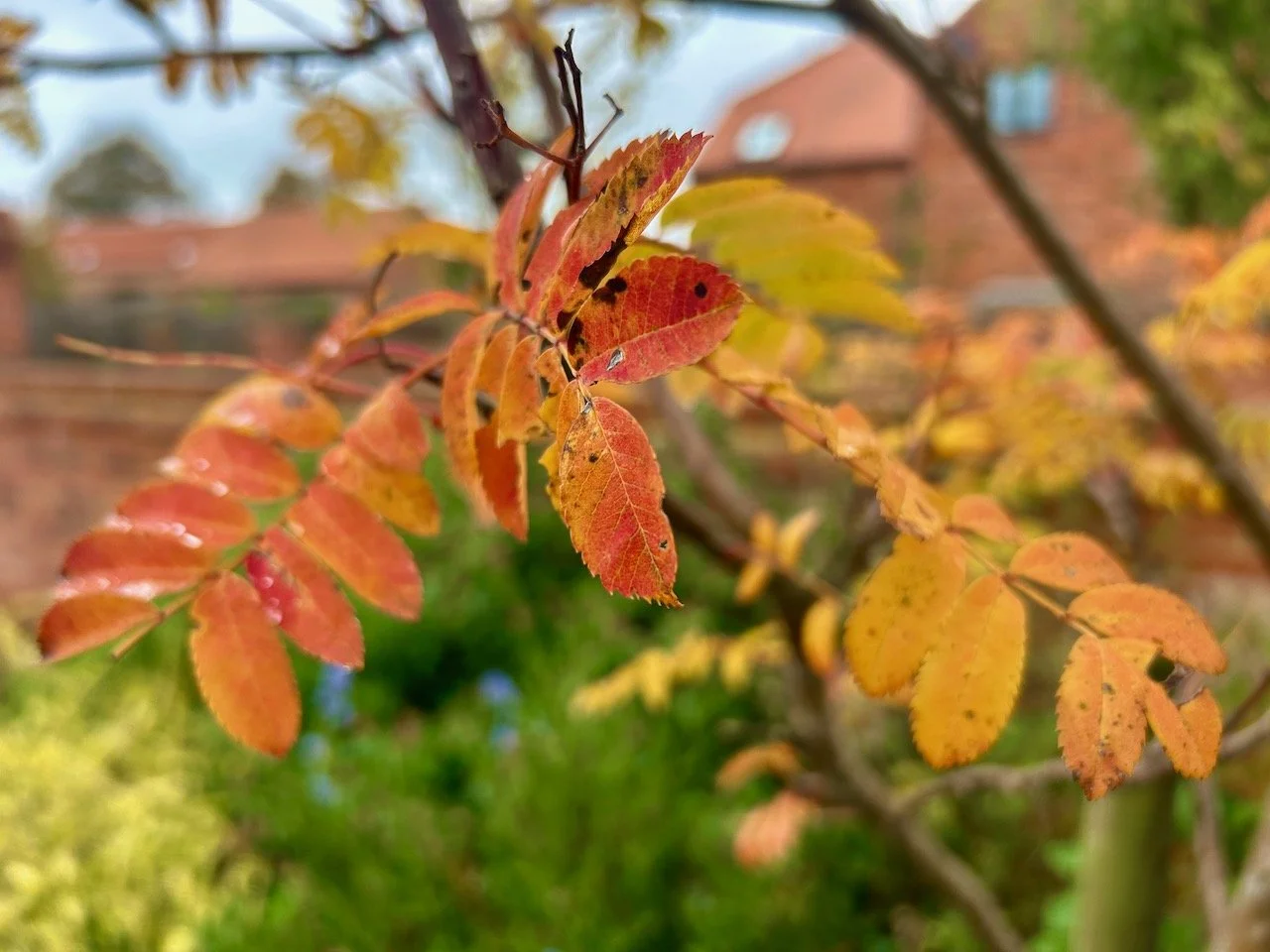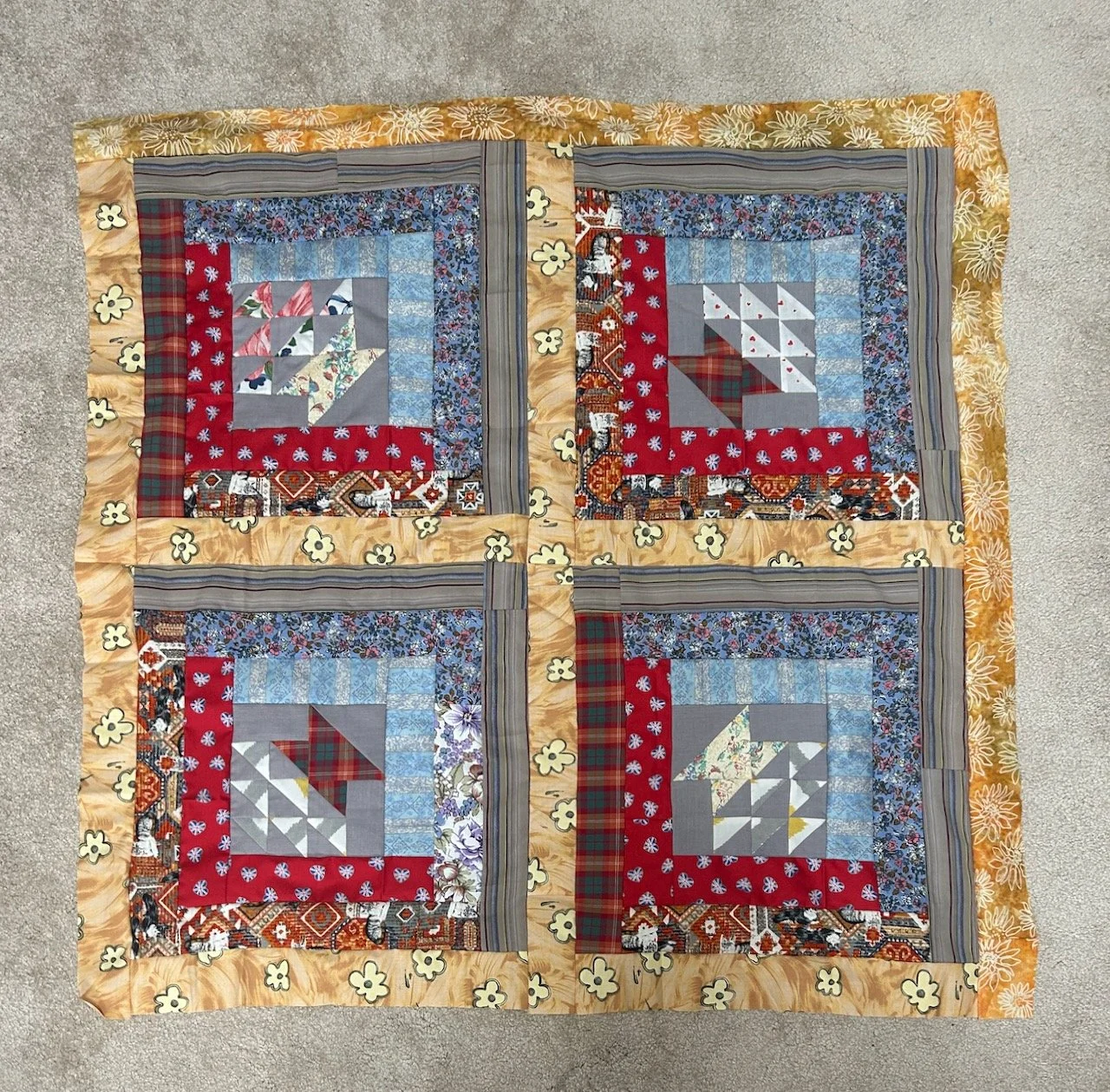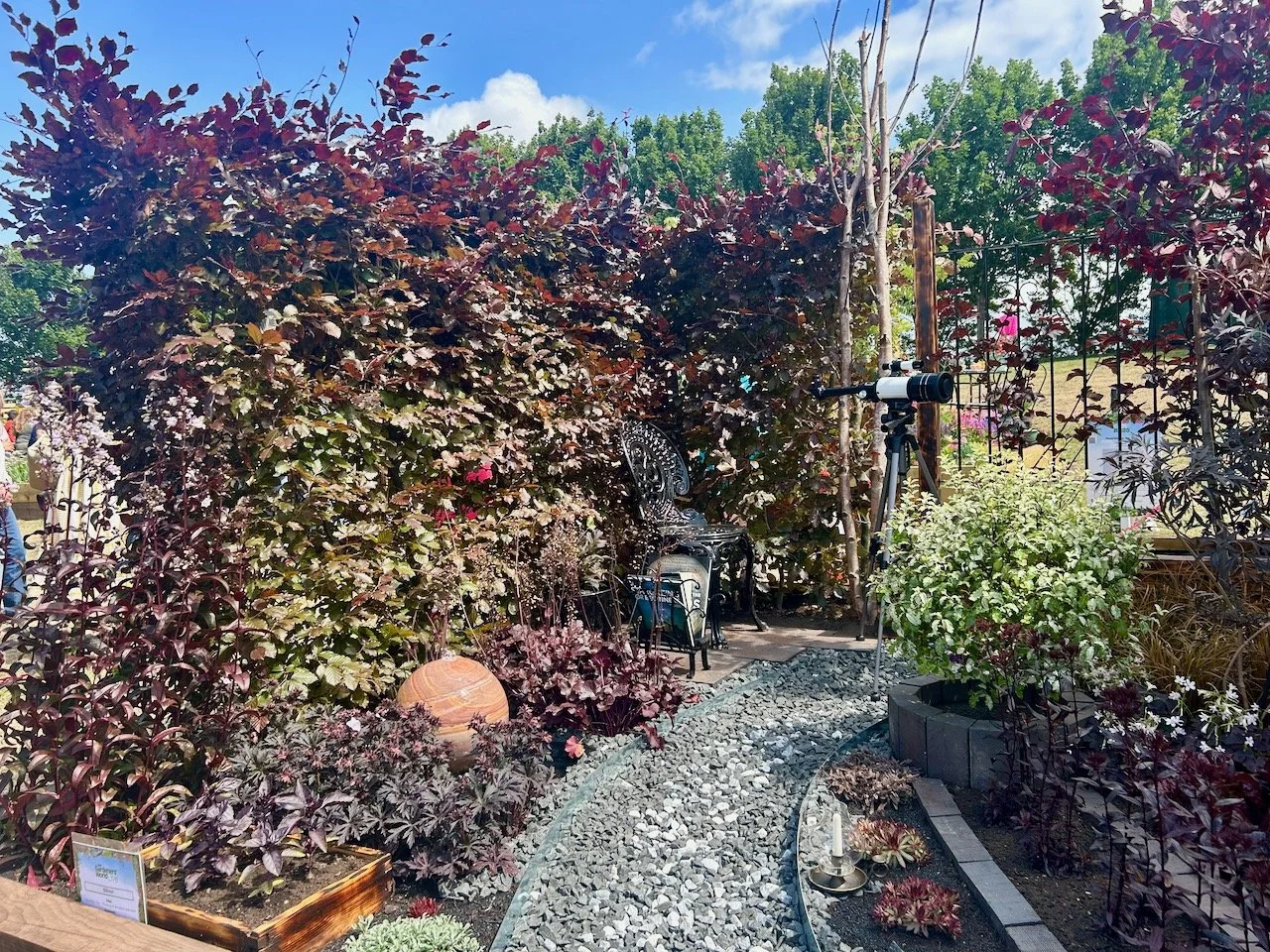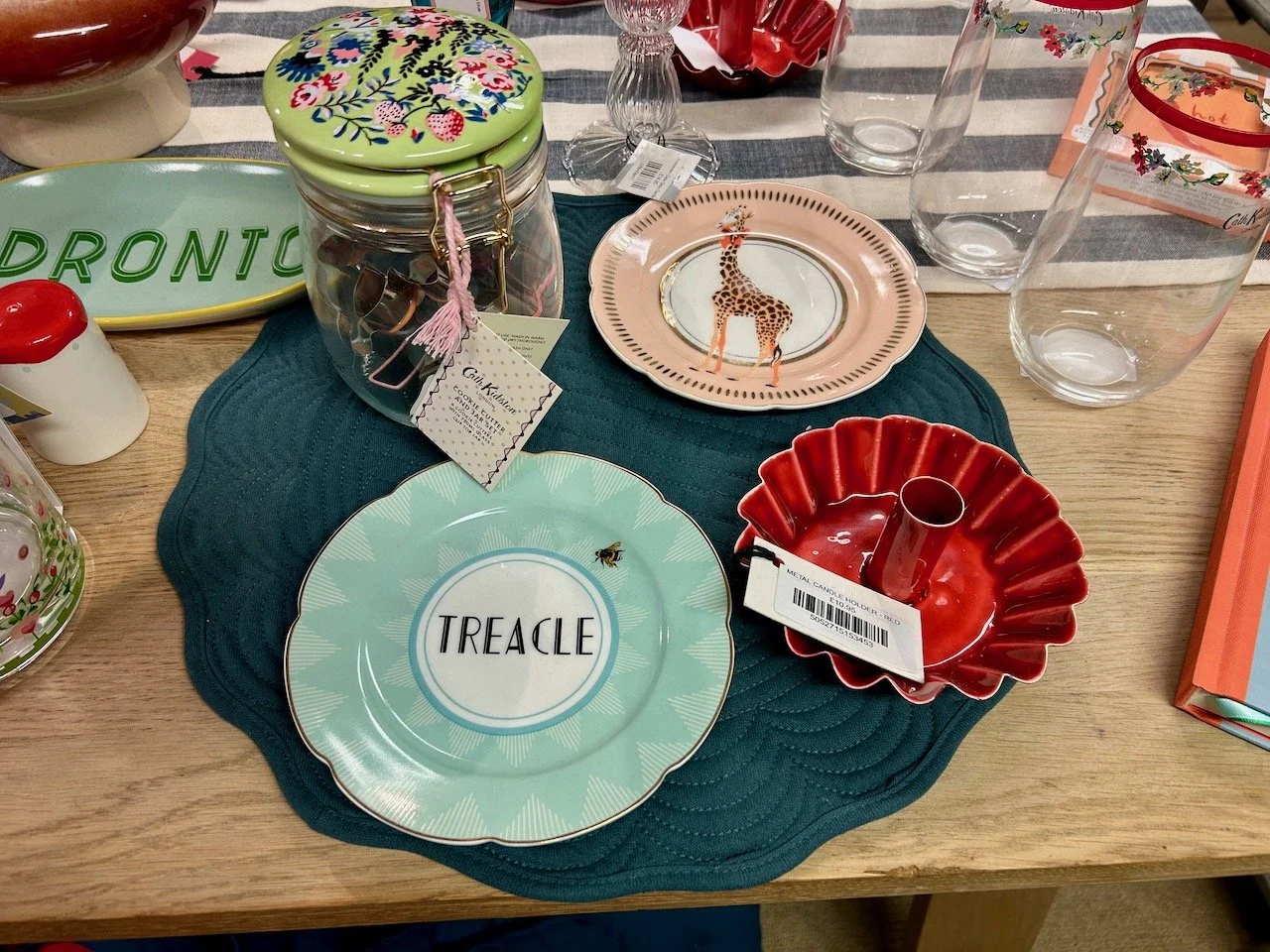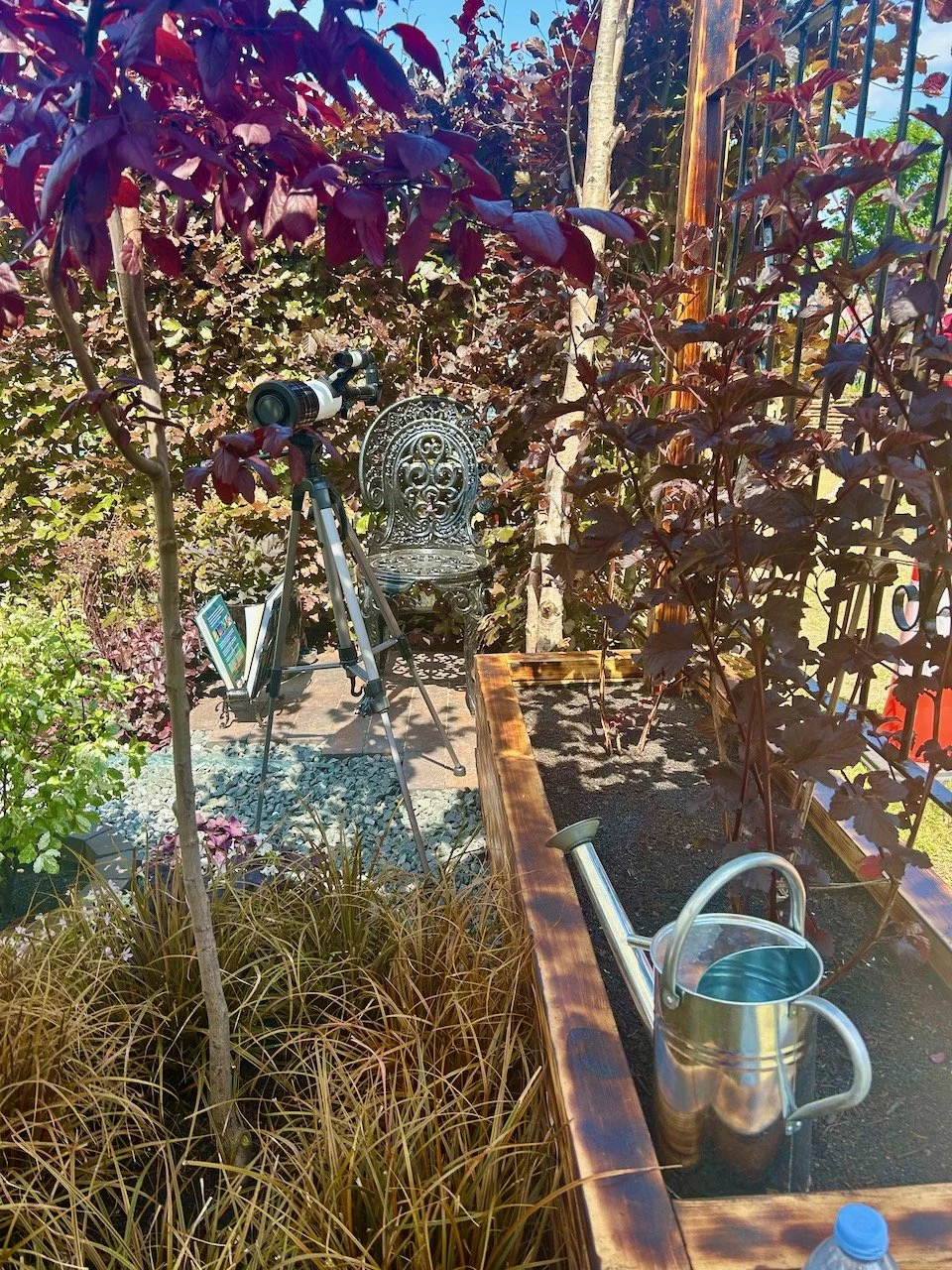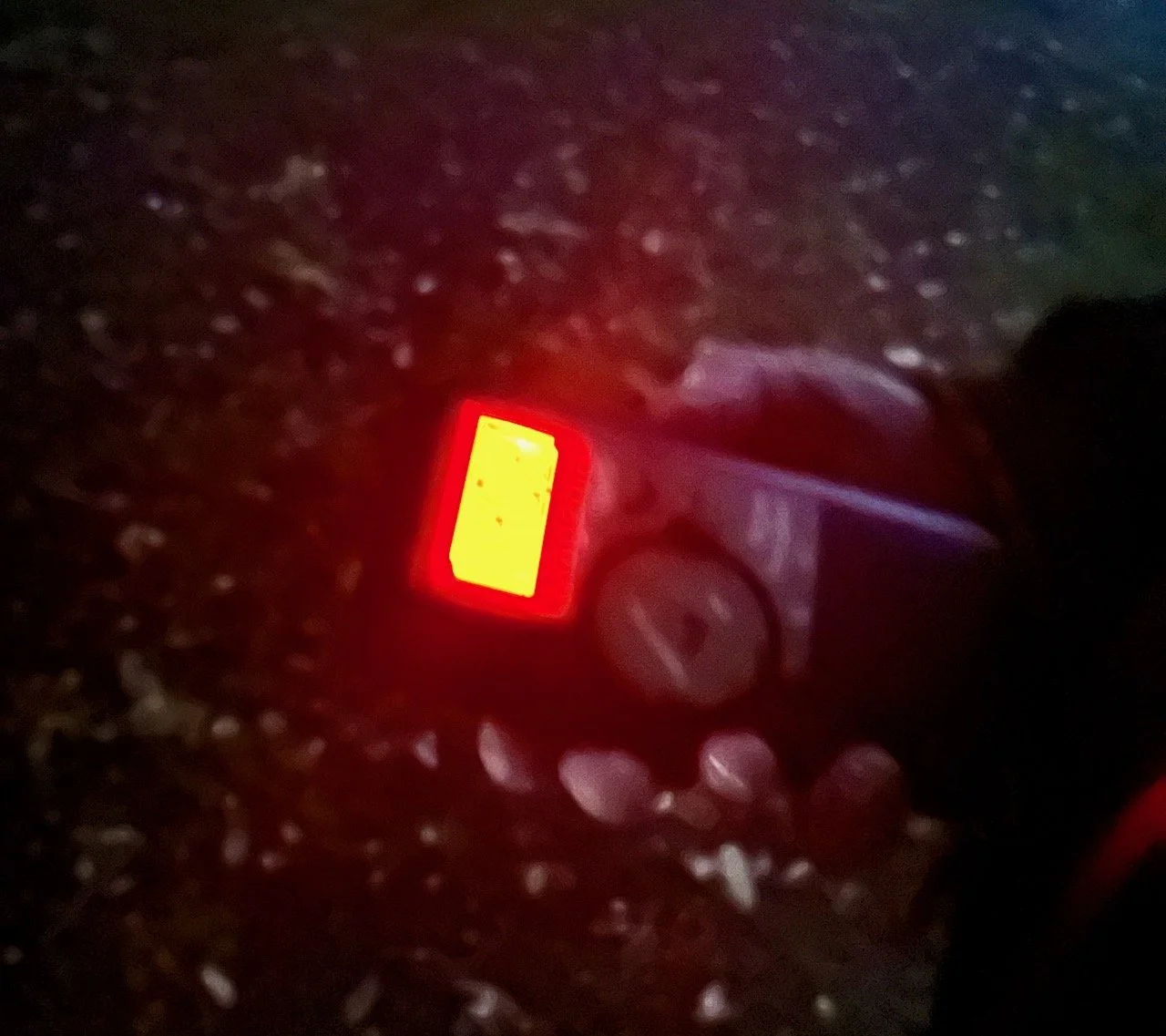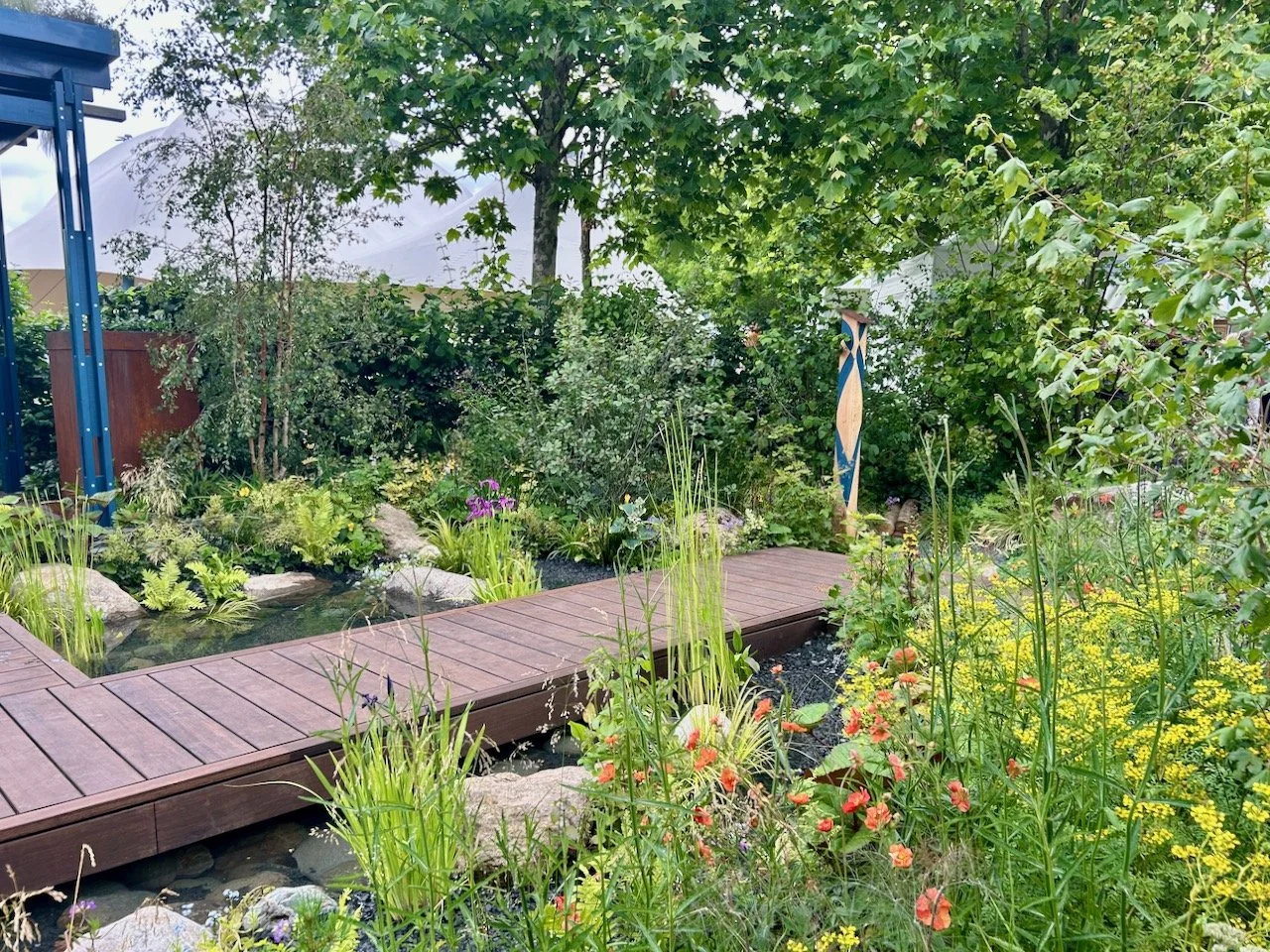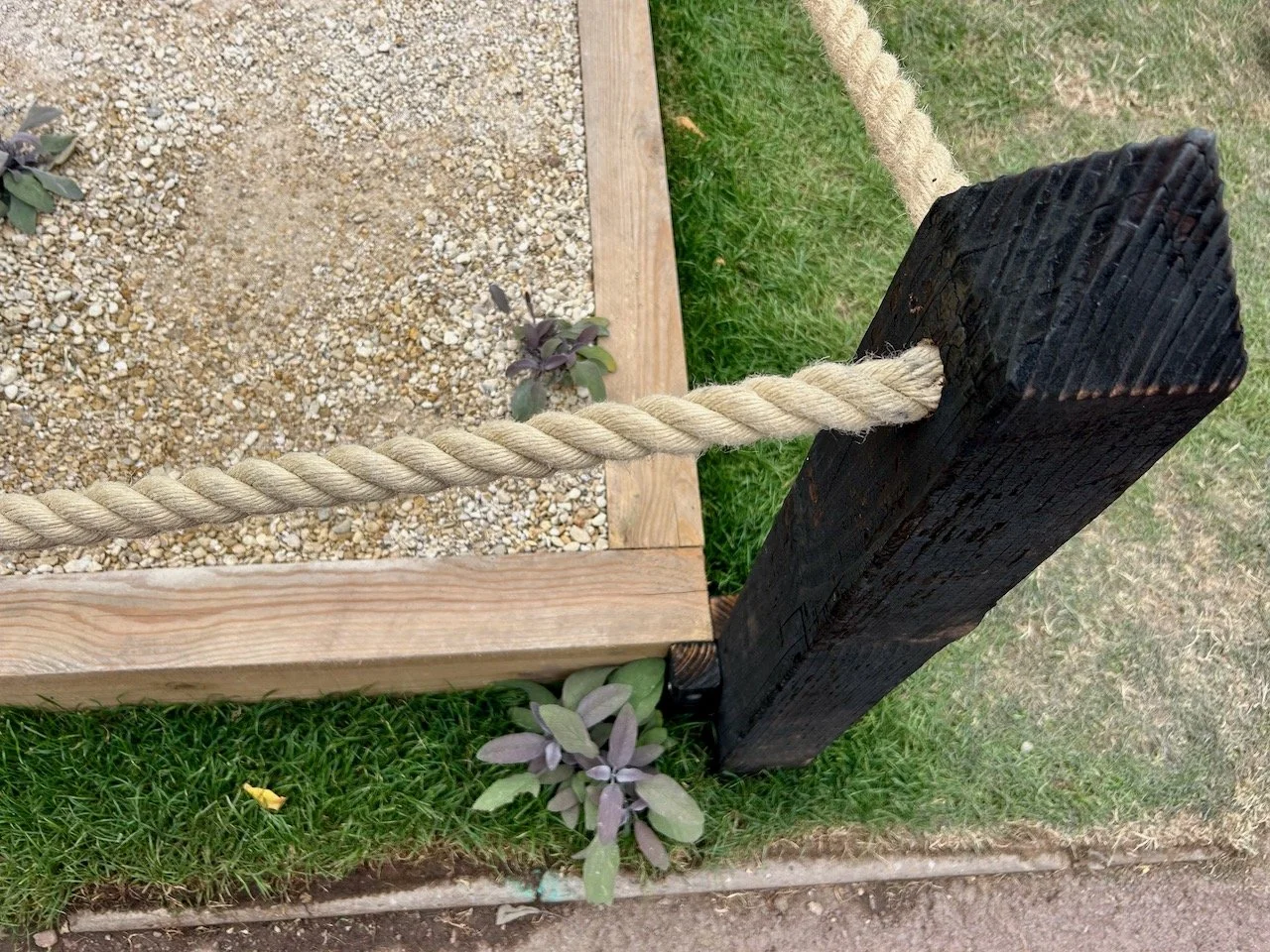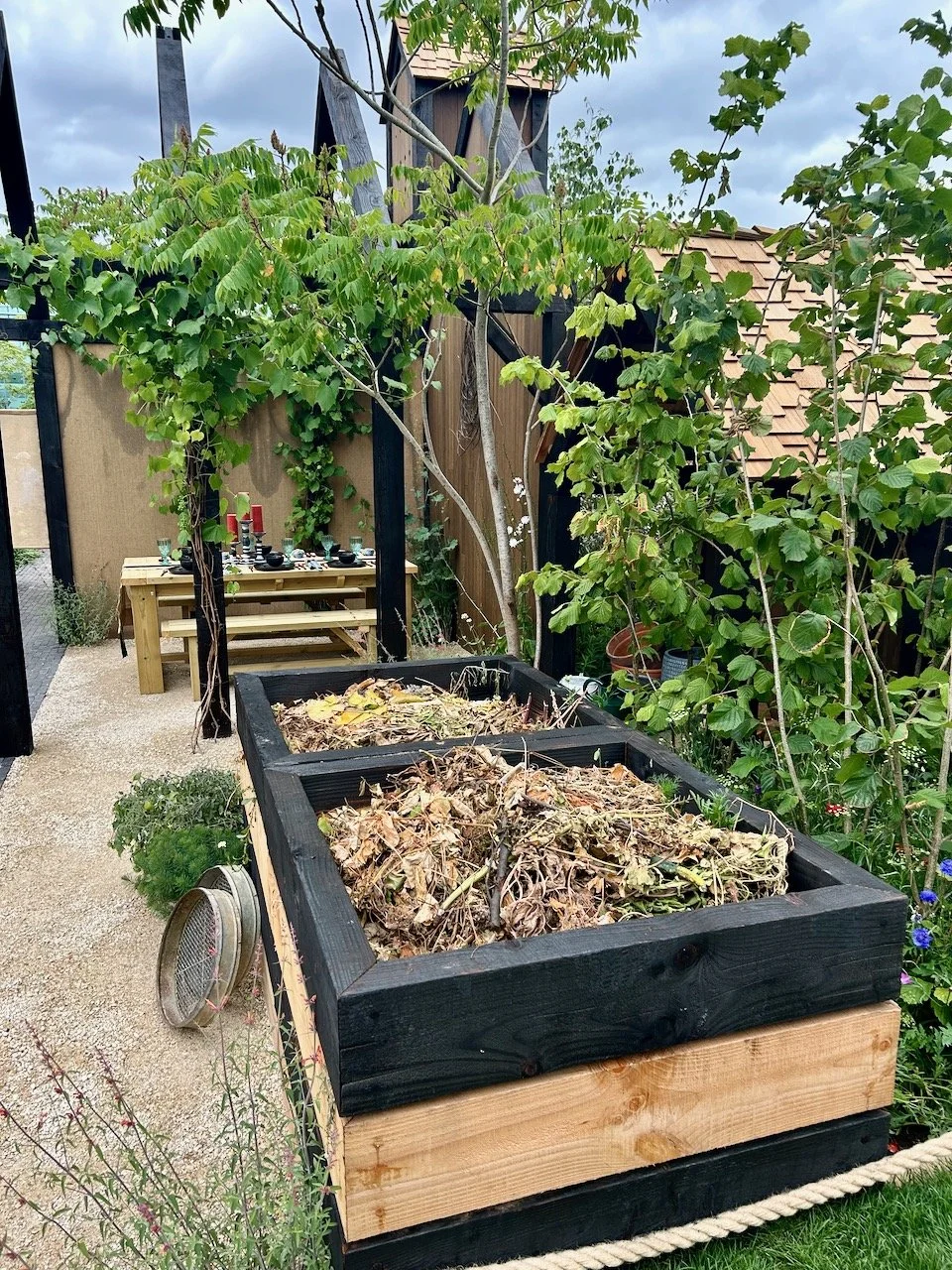* I was invited to this year’s Gardeners’ World Live and provided with a pair of tickets to the show, therefore all my posts will be marked as 'Ad’ though as usual my views and opinions are very much my own.
This garden, designed by Wouter Leyssen, was accompanied by and information stand hosted by one of the garden’s sponsors, the Bats Conservation Trust which is what initially caught our attention, but more on bats later.
To give this Beautiful Border it’s full title - The Milky Way - Thinking of the moon and stars, connects the night and day garden. Dark leaved plants allow the visitor to experience the alien world of the night garden during the daytime. When the usual green colours disappear, things start to look unfamiliar and look like a different world, and as you can see from the photos below it’s quite effective in replicating those night time shades.
They’re hard to see in these photos, but the borders were scattered with white flowers (look bottom right in the photo below), and these represent the stars.
The white-green spherical evergreen shrub in front of the gate represents the moon, and the gravel path the Milky Way - which just goes to show with imagination almost anything can be replicated into a garden design, doesn’t it?
And the bats?
Well we were intrigued as we have a couple of bats which fly around our garden at twilight, and were keen to find out more about these peculiar little creatures. It was great to chat to the people on the information stand, and learn a little more about the fascinating species that so many of us are often quite oblivious about.
Did you know…
All British bats and their roosts are protected by law
A brown long-eared bat can hear a ladybird walking on a leaf
Bats are indicative of a healthy, diverse environment
A single pipistrelle can eat 3,000 tiny insects in just one night
Bats are the only mammal that can fly
Bats are gentle, clean and sociable animals
All of the 17 breeding species in the UK feed on insects
Bats can see but use their ears to hunt in the dark using echolocation
With wings folded a tiny pipistrelle could fit into a matchbox
Bats only have one baby each year, called a pup
Bats don’t make nests or chew wires when roosting in buildings
I didn’t know much about bats, but I did know some of the above. I didn’t realise that they fly all night either, which makes them truly fascinating. We recently joined a ‘bat walk’ organised by our local council at one of their parks, which was just as fascinating.
It was great to see so many people of all ages equipped with the provided echolocators (shown in the fuzzy picture above) keen to learn more, wandering around the park at dusk looking out and hoping to spot at least one or two of bats as they emerged for the evening.
From this walk we learnt that the bats in our gardens are most likely the tiny common pippistrelle, whose characteristics are the fast and jerky movements, but even so I’m pretty sure we’ll still be calling them Boris!
* With thanks to Gardeners’ World for inviting me to Gardeners’ World Live, it was quite a show! I’ll be sharing more from my visit to this year’s show throughout the year - I hope you enjoy them as much as I did the show.

